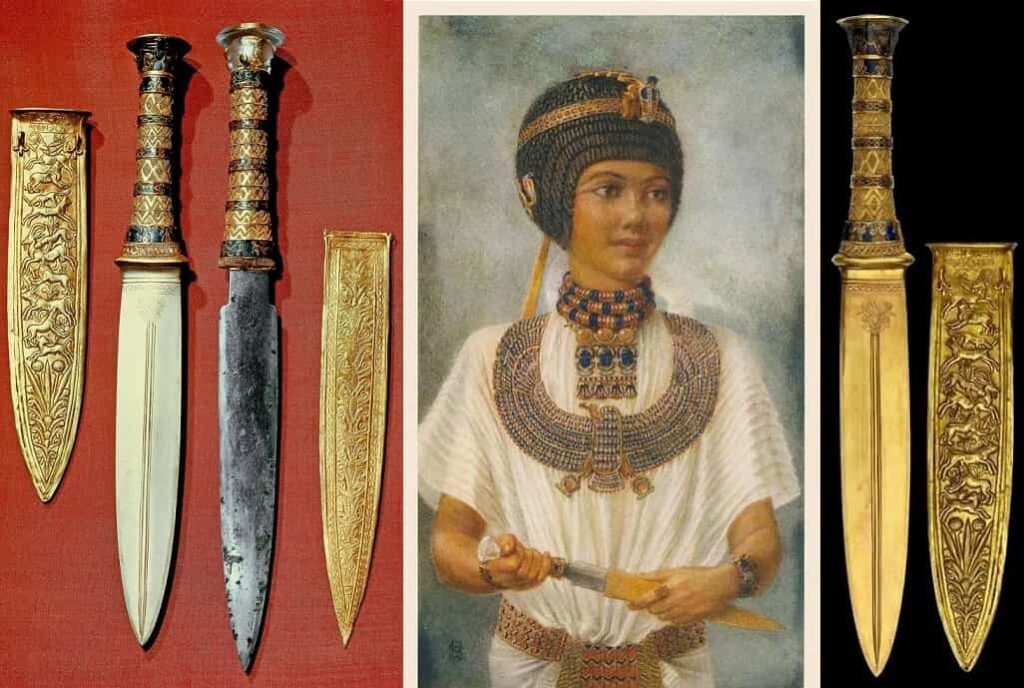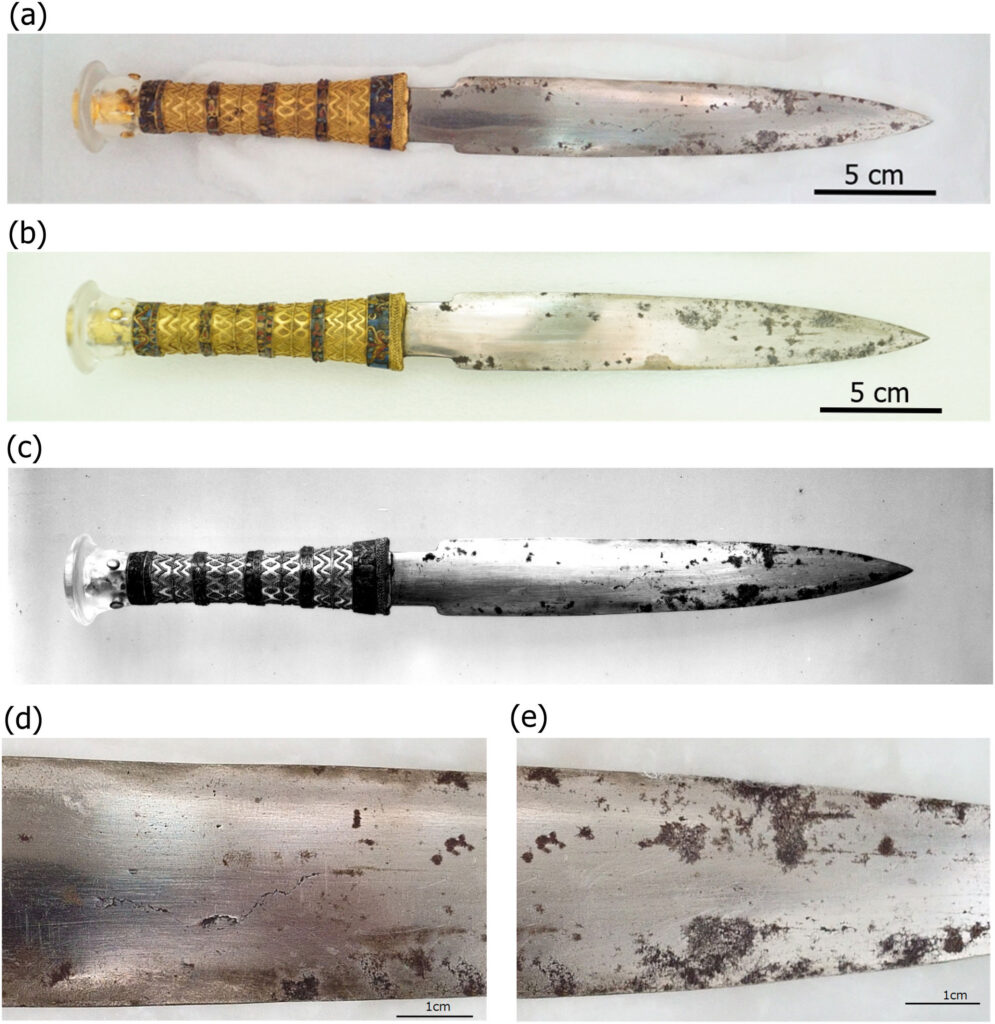
Egyptians Identified Meteorites as Sky Metal Millennia Ago: might sound like a modern sci-fi headline, but it’s rooted in some of the most ancient truths about humanity’s connection to the cosmos. Thousands of years before anyone invented the blast furnace, ancient Egyptians were already working with iron—not from Earth, but from outer space. That’s right. Ancient Egyptians not only used meteoritic iron, but they understood it came from the sky. This is one of the earliest known examples of humans using extraterrestrial materials. And what makes this discovery even more jaw-dropping is the depth of their awareness and craftsmanship around this rare resource.
Egyptians Identified Meteorites as Sky Metal
Ancient Egyptians were more than monument builders—they were early astronomers, metallurgists, and mythmakers. The discovery that they identified and worked with meteoritic iron over 5,000 years ago shows a deep understanding of both the natural and spiritual worlds. From the tiny beads at Gerzeh to the ornate dagger in Tutankhamun’s tomb, meteoritic iron tells a story of wonder, observation, and craftsmanship. It reminds us that sometimes, the greatest gifts don’t come from the earth—but from the sky.
| Topic | Details |
|---|---|
| Earliest Use | Iron beads from Gerzeh cemetery dated to around 3200 BCE, made from meteoritic iron. |
| Royal Artifact | King Tutankhamun’s dagger (~1330 BCE) confirmed to be made from meteoritic iron. |
| Language Evidence | “bjȝ” (bja) in ancient Egyptian means both “iron” and “sky” — appearing in Pyramid Texts (~2400 BCE). |
| Scientific Analysis | Portable X-ray fluorescence (XRF), neutron activation, and electron microscopy confirm meteoritic origin. |
| Broader Context | Other ancient cultures (Mesopotamia, China, Inuit) also used meteoritic iron. |
| Official Source | British Museum – Ancient Egypt |
What Did the Ancient Egyptians Really Know?
In 1911, archaeologists digging at the Gerzeh cemetery, about 70 km south of Cairo, uncovered nine tiny iron beads from a burial site dated to around 3200 BCE. At first glance, these beads just looked like ordinary ornaments. But tests conducted nearly a century later told a different story.
Using neutron activation analysis and electron microscopy, researchers discovered these beads contained over 30% nickel, far above what is found in smelted terrestrial iron. They also showed crystalline patterns known as Widmanstätten structures, which only form in metal cooled over millions of years in space—proof that these beads were made from meteoritic iron.
Later, the discovery of King Tutankhamun’s iron dagger, buried alongside him around 1330 BCE, added further weight to this theory. In 2016, a joint Italian-Egyptian team used portable X-ray fluorescence spectrometry and found the dagger contained about 11% nickel and 0.6% cobalt—signatures consistent with iron meteorites.
These were not random findings. They represented a broader cultural knowledge about iron’s extraterrestrial origins.

Language Doesn’t Lie: “Iron of the Sky”
The ancient Egyptians even had a name for this rare material: bjȝ (pronounced bja). This word appears repeatedly in religious texts and royal inscriptions from around 2400 BCE, especially in the Pyramid Texts—the earliest known religious texts in the world.
One particularly revealing line reads:
“Unis seizes the sky and splits its iron.”
This phrase wasn’t metaphorical poetry. It reflected a belief—and perhaps even a knowledge—that certain metals fell from the heavens. In a society where cosmic order (Maat) played a central spiritual role, this celestial metal naturally became associated with divinity, kingship, and immortality.
It’s no coincidence that the tools, jewelry, and weapons made from meteoritic iron were used almost exclusively in burial contexts—often reserved for royalty and high priests. To the Egyptians, iron wasn’t just a tool; it was a heavenly gift.

Tools, Techniques, and Ancient Innovation
Unlike later civilizations that smelted iron, the Egyptians of the early dynastic period (and before) cold-worked their iron. That is, they shaped the iron without heating it to melting temperatures.
Meteoritic iron is hard but malleable enough to be hammered when heated slightly or worked skillfully at room temperature. The process may have involved:
- Identifying meteorite fragments after a fall—likely witnessed due to bright, flaming sky trails.
- Breaking down large pieces into manageable fragments using stone hammers.
- Cold-hammering and shaping the iron into beads, blades, or ritual tools.
- Polishing the surface with abrasives to reveal luster and improve aesthetics.
- Combining with gold or gemstones for burial items or religious offerings.
One thing’s clear: they knew this wasn’t normal Earth metal. Its appearance, strength, and rarity made it ideal for symbolic use.
Global Perspective: Other Cultures That Used Sky Metal
The ancient Egyptians weren’t the only ones fascinated by iron from above. Across the globe, early civilizations stumbled upon and utilized meteorites in similar ways.
- Mesopotamians referred to “iron from heaven” in Akkadian texts.
- Inuit tribes of Greenland used iron from the Cape York meteorite to forge tools before European contact.
- In ancient China, documents dating as far back as 2000 BCE mention “celestial iron.”
- In 2023, Swiss archaeologists confirmed that an arrowhead from Mörigen (c. 900–800 BCE) was made of meteoritic iron—its composition matched the Kaalijarv meteorite field in Estonia.
These shared practices suggest an early global understanding—not only of the utility of this metal but of its symbolic importance as a material from the heavens.
The Science Behind It: How We Know Egyptians Identified Meteorites as Sky Metal
The most convincing proof that this iron is extraterrestrial comes from modern science.
Meteoritic iron typically contains:
- Nickel (5–35%)
- Cobalt
- Trace elements like germanium, phosphorus, and gallium
- Unique internal crystal structures (Widmanstätten patterns) formed from slow cooling in space
Analytical tools used in confirming meteoritic origin include:
- Portable X-Ray Fluorescence (pXRF): For elemental analysis without damaging artifacts.
- Scanning Electron Microscopy (SEM): Reveals microstructure and trace elements.
- Neutron Activation Analysis: Measures rare isotopes to pinpoint meteoritic source.
- Isotope Ratio Mass Spectrometry (IRMS): Confirms extraterrestrial isotopic signature.
In Tutankhamun’s case, all these signs pointed clearly to a meteorite origin—likely from one of the nickel-rich iron meteorites still found in desert areas across North Africa.

Practical Takeaways and Cultural Insights
So what can we learn today from this 5,000-year-old cosmic connection?
- Value Comes From Story: Meteoritic iron was rare, but it was the story that gave it power—literally a gift from the heavens.
- Symbolism Trumps Utility: These iron objects weren’t for war or agriculture. They were used in burials, rituals, and crowns—because they meant something.
- Curiosity Transcends Time: Ancient people weren’t “primitive.” They were keen observers of nature who connected falling stars to strange new metals.
- Modern Continuation: We’re now pursuing asteroid mining and space-based resources. In a way, we’re following in the Egyptians’ footsteps—chasing metal from the sky.
Stunning 2025 Meteor Showers Are Coming—These Locations Offer the Best Seats in the Sky
Not Gold, Not Copper—Egyptians Used Iron From Space in Sacred Objects, New Study Reveals
Not Gold, Not Platinum—This Man’s Mysterious Rock Was Worth More Than Both and Came from Space
Step-by-Step Guide to Spotting Meteoric Iron
Want to know how scientists today determine whether a piece of iron is from a meteorite? Here’s a simple breakdown:
- Check the Metal’s Composition: High nickel content (over 5%) is a strong indicator.
- Look for Crystalline Patterns: Use acid etching or imaging to reveal Widmanstätten structures.
- Run Elemental Scans: Use XRF or SEM for trace elements.
- Analyze Isotopic Signatures: Compare iron and nickel isotopes to known meteoritic samples.
- Compare to Known Meteorites: Match with global fall records or meteorite fields.
Museums and labs across the world now use these techniques to revisit old artifacts and test new finds.











